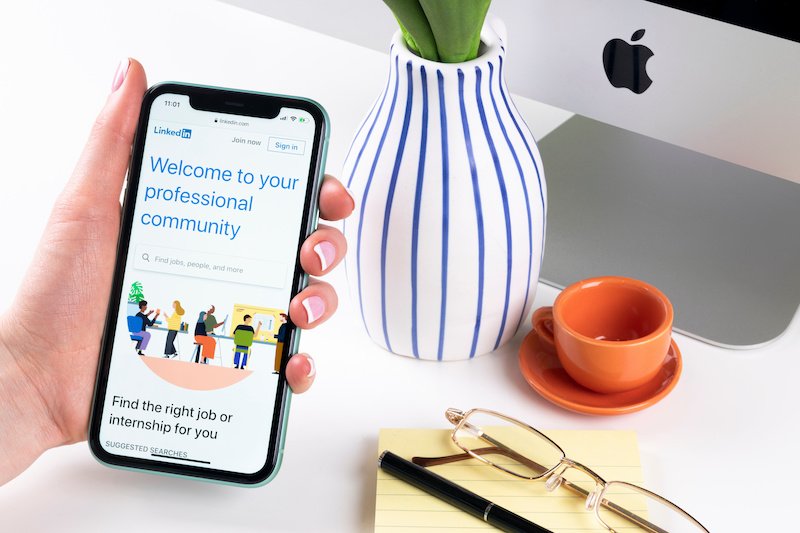Are you getting the most out of your LinkedIn profile?
By Danielle Mellema, Digital Content Manager & Chief Ghostwriter
Perhaps you engage on LinkedIn often, regularly sharing interesting articles or congratulating colleagues when they land a new job. But when was the last time you updated your LinkedIn profile page?
If it was when you were hired to your current position (or earlier), then it’s time to give it a refresh.
Like a firm handshake and confident, engaged eye contact when you’re meeting someone new, your LinkedIn profile is forming a first impression for each person who views it. You know, like that potential new client you met at the networking event last week, or a recruiter looking for the just-right candidate for an unpublished job opening.
Here are some simple ways to refresh your profile to make sure you’re putting your best (digital) foot forward.
Don’t waste your Headline.
Most LinkedIn users just set their current job title as their profile headline. This is a missed opportunity, especially if you’re someone who has their sights set on taking that next step in your career.
If people viewing your profile want to know what your current job title is, they can scroll down a quarter of a page and find it easily. Instead of a redundant headline, create a custom one using the editing feature at the top of your profile. Sum up your career experience, aspirations, or personal brand “superpower” in three or four words: “Senior Healthcare Finance Executive,” “Farm-to-Table Restauranteur,” or “Community-Building Expert,” etc.
Make your About section readable.
Is your LinkedIn About section completely blank? Or maybe you just copy-and-pasted your full-length bio from your company’s website? You’re not alone.
We get it—it can feel like the lowest possible priority when you have a thousand other things to do. But putting together a few sentences for your About section is easier than you think, and it gives you a chance to highlight what you uniquely bring to the table.
The key is to make your About section easily readable. Believe it or not, the people perusing your profile have even less time to read through it than you have to write it, so don’t give them a five-paragraph essay. After a simple two- or three-sentence intro, use headings like “Top Accomplishments,” “Career Highlights,” “Areas of Expertise,” or “Special Skills” to share a few (Yes, just a few. Less is definitely more in the About section.) highlights.
Clean up your Experiences.
The Experiences section is the bread-and-butter of the LinkedIn profile. It’s the main way to tell the story of your career on your profile, and is the information most profile visitors (whether recruiters or acquaintances) are looking for.
And odds are you probably haven’t given yours a look since you added the position you currently have.
Here are a few things to check as you tidy up your Experiences section:
Are the Organization names linked to the Company page of your employer? Whenever possible, make sure you’re matching your Organization name to that of your company’s official page on LinkedIn. That way, the logo of your current and former employers will appear next to your job title. This allows people to learn more about the company you work for and adds an impression of professionalism and legitimacy to the work you did there.
Are your positions within a single company “nesting” under the company name? If you’ve slowly worked your way up in your company, make sure that longevity is celebrated! Make sure the start and end dates of each position with your employer are accurate with no time gaps. This allows your positions to all be listed under a single Organization, and features the number of years you’ve invested in that company next to the name of your organization.
Are you consistent with your position information and description? Consistency is one of the things that separates a truly impressive, good-first-impression-making profile from a merely informative one. Do you include the month and year for your positions, rather than just the year? Great—make sure you do that for every one. Is there a short paragraph describing your responsibilities or accomplishments on a few of your positions? Awesome—keep the length and types of responsibilities you list consistent across your various jobs.
Add more skills.
Bulking up your Skills section can feel a little humble-braggy, but your Skills section is searchable by recruiters and potential employers. You can add up to 50, but at least 15 is a good number to ensure you’re representing the range of abilities and expertise that would make you an asset to any organization.
Make better use of your Volunteering section.
You may love it, you may hate it, but the fact is that the powers that be at LinkedIn give volunteer positions much more emphasis and airtime than professional organizations and memberships. Volunteer experiences are listed higher up on the profile than the Organizations section, and only the Volunteering section allows you to link to Company pages.
If you are a member of a board of directors, participated in a focus group at your alma mater, had a fellowship or were on a committee within a professional organization you’re a member of, consider mentioning that in the Volunteering section as well as the Organizations section to give those contributions a visual boost on your profile.
If you want some help refreshing your LinkedIn profile, or like the idea of your entire team having a consistent, professional LinkedIn presence to boost your branding efforts, we offer one-on-one LinkedIn profile updates and training sessions with our LinkedIn coach to help you make the most of this powerful platform.

